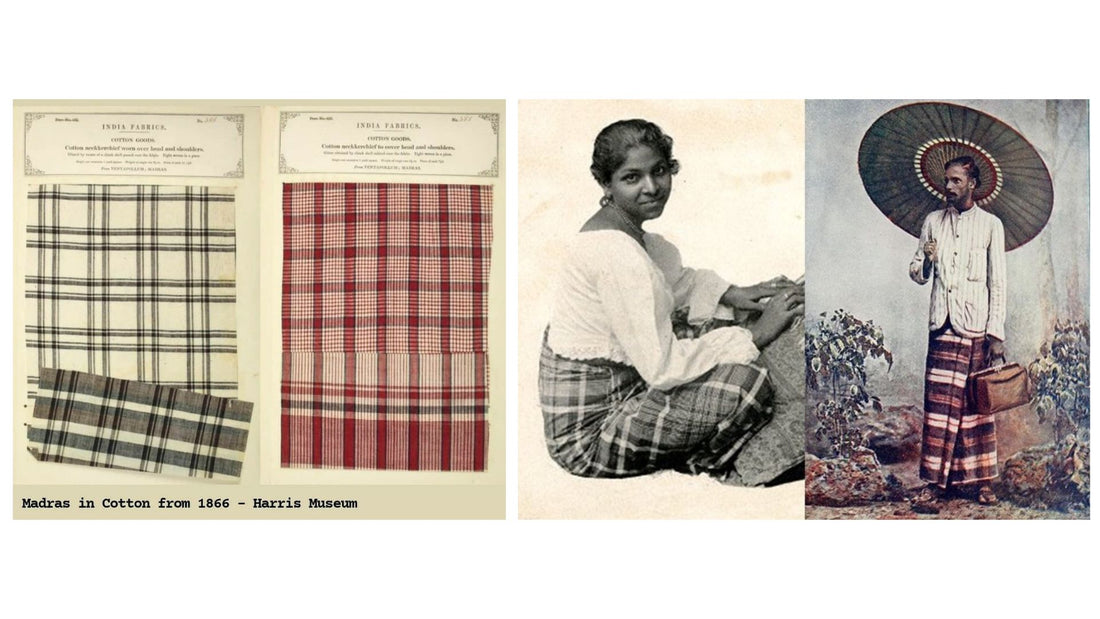Indian plaid aka Madras checks is named after the Indian city of Madras( now Chennai ) from where it first made its way to the west. By the 13th century, the fabric was exported to the Middle East & Africa - in fact real madras handkerchief became a symbol of Kalabari (Nigerian) identity. In the 16th century, with the arrival of the European colonisers, this fabric was mass produced and exported all over the world.


In 1958, William Jacobson, a leading textile exporter purchased 10,000 yards from Capt. C.P. Krishnan of Leela Lace and sold them to BROOKS BROTHERS without proper wash care instructions. This naturally dyed fabric, meant to be washed with care to prevent bleeding. They launched the madras collection pan America & were soon flooded with complaints of bleeding fabric. David Ogilvy, an advertising legend, devised a new strategy, branding it as "GAURENTEED TO BLEED" in Seventeen Magazine, sparking immediate success.

Madras fabric has certain unique characteristics. They are first and foremost all hand woven cottons with the same pattern on both sides of the cloth. This is one of the easiest ways to authenticate true Madras. Traditionally, the cloth has small flaws, because it is hand woven. These small flaws do not in any way take away from the fabric’s quality but add to its character and can in fact, be taken as a hallmark of authenticity.

We got introduced to Madras Checks during our teenage years, through our interest in music as popular musicians like Johnny Rotten of punk rock band Sex Pistols and The Notorious B.I.G was seen wearing it.
This led us to Chennai in search of fine Indian plaid or Madras checks. Our drop 2 is an ode to all the musicians we grew up listening to as well as a step towards our commitment to sustainability. Launching on our website soon, stay tuned.


